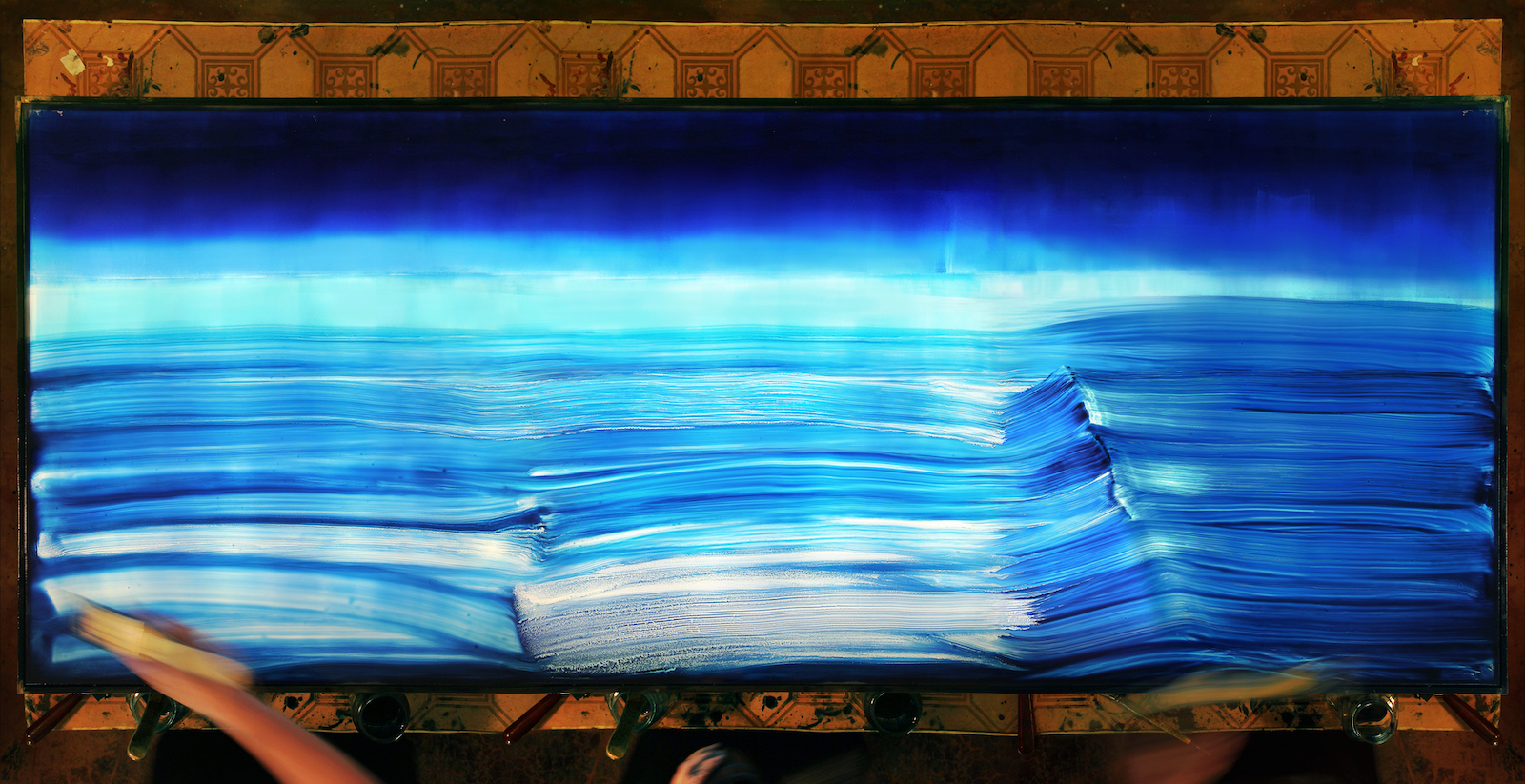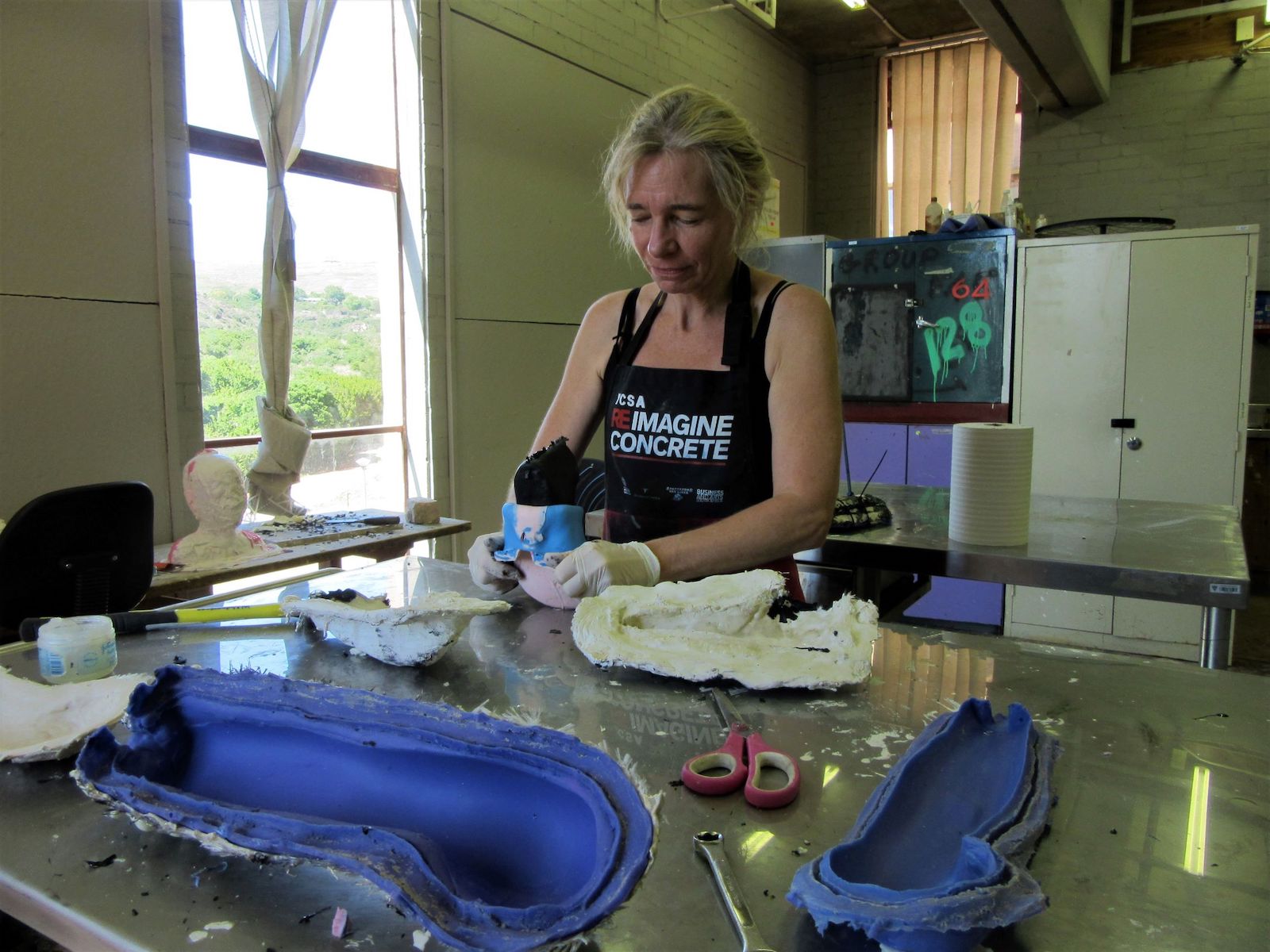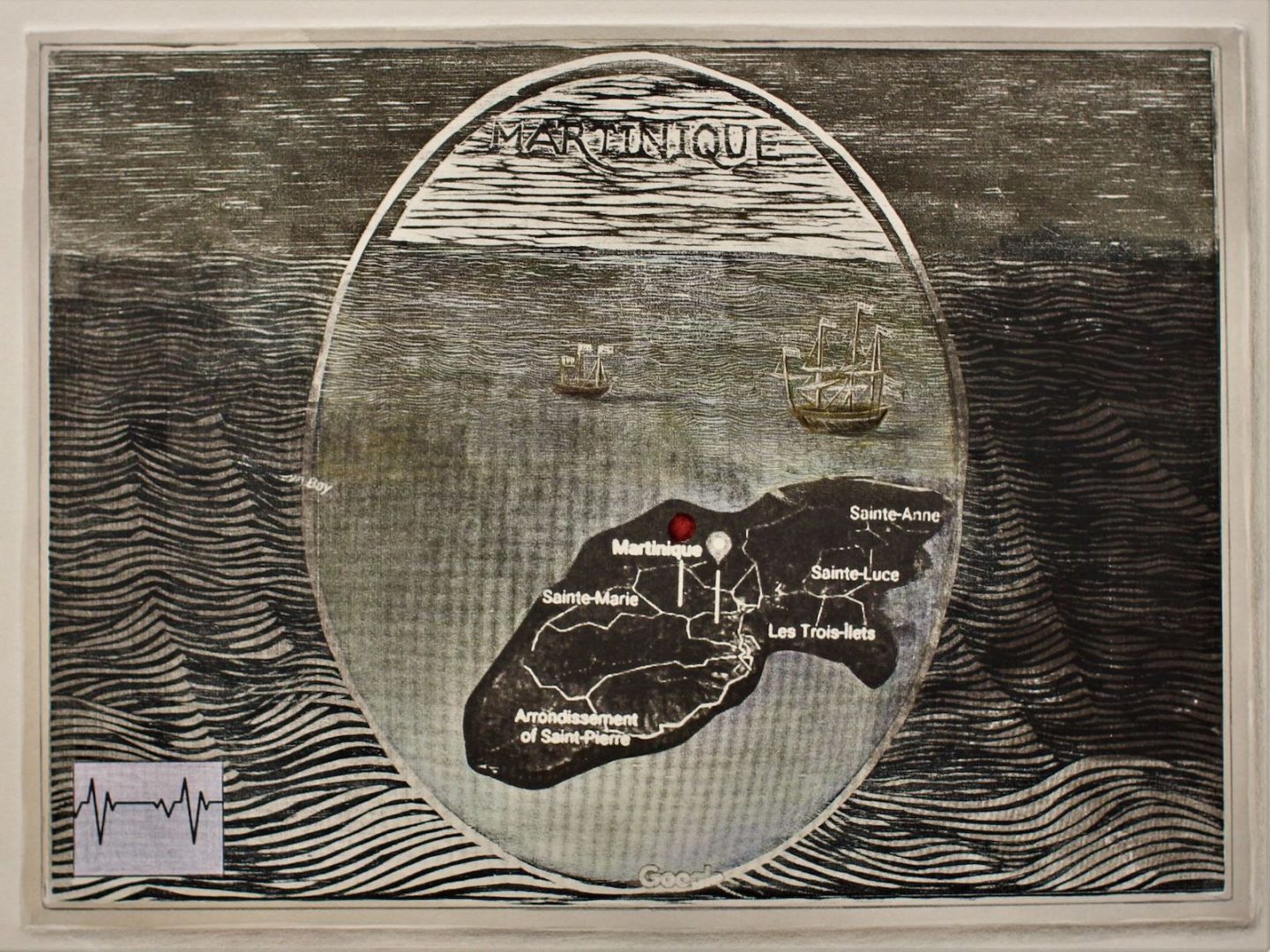TO BE KING
Etchings, prints, mixed media, installations … the multidisciplinary work of South-African artist Christine Dixie often draws on literature to explore themes such as womanhood, the body, our hidden emotions that may or may not resurface. Born in Cape Town in 1966, Christine Dixie is also a senior lecturer at the Department of Fine Arts at Rhodes University in Grahamstown, South Africa.
We met Dixie and saw her work for the first time in Lithuania at the International Contemporary Art Festival KAUNAS IN ART, “So Close, So Far” in November 2018 where she was showing “To be King”, a multimedia installation that evolved from the painting Las Meninas by Velasquez (1565) and a subsequent essay on the painting by Foucault (1966) and in which she is questioning the Status Quo (to be continued).
Our passion for her work has grown ever since, not least for her special way of combining political and philosophical concepts with the gender narrative. What then could be a better way to continue the conversation with this exceptional artist than one of our Introducing Interviews:


Is there a particular artwork or place that inspired you to become an artist?
When I was very young I used art as a way to carve out a space for myself. It was a place of play and a place of safety to which I could retreat.
I did not know it at the time but this sense of making art as a way of making meaning in my world as a child carried through as an adult.

Which of these elements (space, air, fire, water, earth) would you choose in relation to your practice and yourself, and why?
This is a difficult question for me to answer because I have used all of these elements in different ways in relation to my practice.
I think that much of my work since living in the Eastern Cape has had a relationship to earth, this is because politics around land and landscape have such a complex history in this space.
One of my works that touches on this issue Even in the Long Descent was acquired by the Smithsonian National Museum of African Art and became part of a major exhibition there called Earth Matters: Land as Material and Metaphor in the Arts of Africa (2013).

Made in 2002 this series was partly in response to my time spent living in Nieu Bethesda, (a small town in the Karoo) and the uncanny sense of walking upon earth that held millenniums of time below the surface, curator Karen Milbourne of the Smithsonian National Museum of African Art notes,
The crisply delineated blades of grass and subtle trails of the surface give way to reveal deathly gray-blue bodies, possibly swept to the surface in a mud-slide or still buried deep below.
Their unearthly presence calls to question the stories that lie dormant beneath the unblemished surface above.
More recently, in addition to the earth, the elements of fire, water and space were incorporated into the installation To Be King (2014) and the print exhibition The Santiago Cross – Invisible Trade (2015).
Both of these are part of the on-going project called The To Be King Project which has several different components.
In the installation water appears as the Atlantic Ocean across which ships sail at intervals throughout the animation.
In another sequence of the animation the ‘princess’ paints a child’s picture of space and in one of the final climatic sequences, the ‘artist’ is both literally and metaphorically on fire.


Do you consider yourself spiritual and how does this feed into your work?
I do not consciously consider myself as spiritual and do not consciously attempt to make artwork that is spiritual.
However, if I look back on my work over the years I can see that I am drawn to depicting motifs in which the undefined, the liminal and the ineffable are depicted.
In a scene in the installation To Be King a body rises into space as if her soul has transcended.
In another installation The Binding, the child’s body literally and metaphorically disappears into the surface of the paper and then emerges in the next print as if reborn.
I would say that through material associations and through metaphorical allusions ‘spiritual’ connotations are at times suggested in my work rather than a deliberate evocation.

Is there a book or author you are reading that stimulates inspires you?
I have just finished reading Albert Camus book The Plague which I found profoundly moving and relevant.
The figure of the Plague doctor is something I have become fascinated by and am reading what I can around this intriguing historical figure.

Please tell us what your are currently working on and what you are looking forward to this year in terms of exhibitions?
I am currently working on several projects. I have recently finished a series of prints entitled Harbouring Fanon and am about to edition these prints. This series of ten prints merge the concept of harbours as both a literal place, a space in which ships are anchored and merchandise, ideas and languages are exchanged, and the concept of giving harbour or shelter to a particular vision of the world.
I draw on two visual tropes, early maps which track European Empires initial forays into depicting the harbours of potentially profitable territories and the contemporary mapping of space via Google Maps.
These two tropes are separated by time but are conflated onto specific geographic locations.

However, I also see this series as a non-mimetic portrait of Franz Fanon through a depiction of some of the literal harbours he travelled in his lifetime. The ten prints track his life from his birth-place on the island of Martinique to his death place in Bethesda, Maryland.
Completely serendipitously I discovered that one of the locations I use in this series, the port of Oran in Algeria, is the town that Camus uses at the town infected by plague in his book.
I am also working towards an installation, provisionally titled, Atropos, which is a multi-media collaboration between myself and colleague Rat Western.
This installation uses the Three Fates as the locus for developing ideas around the use of technology as the life-thread that binds our birth, life and death together.
Read on about Christine Dixies fascinating and dense projects on her website!
Authors: Esther Harrison & Alexandra Etienne
